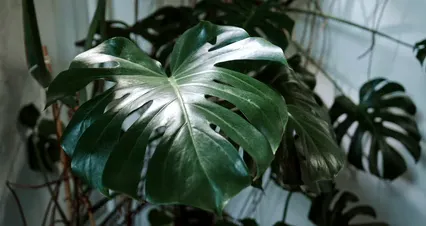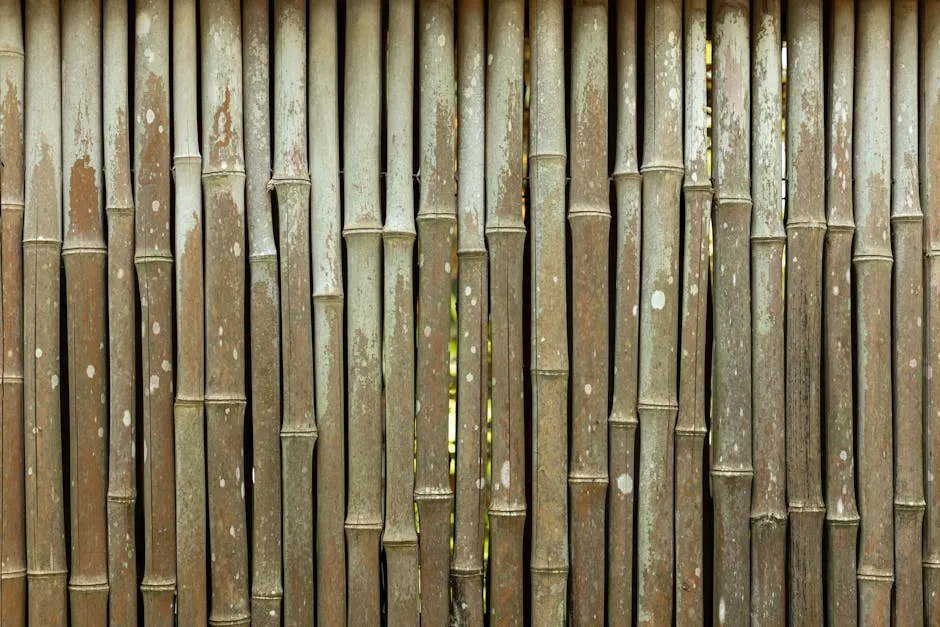

The Ultimate Guide to the Dragon Tail Plant: Everything You Need to Know!
Introduction
In the world of exotic houseplants, few can match the allure and charm of the Dragon Tail Plant, commonly known as Epipremnum pinnatum. This tropical gem boasts stunning fenestrated leaves that resemble the dragon’s tail, giving it a unique identity in the plant kingdom. With its climbing habits, this beauty thrives both indoors and outdoors, effortlessly adding a touch of the wild to your space. But what makes the Dragon Tail Plant so special?
Let’s unravel its mysteries. First off, it’s not just about looks. This plant has fascinating growth habits that keep it interesting as it matures. Its climbing nature allows it to scale tall trees in its native tropical habitats, which include regions like India, China, and tropical Australia. And did you know it can grow up to a staggering 20 meters? Talk about ambition!
But wait, there’s more! Beyond its visual appeal, the Dragon Tail Plant has potential medicinal benefits. Yes, you heard that right. Its leaves have been used in various cultures for their healing properties, providing relief for ailments like rheumatism and skin conditions. However, caution is key, as all parts of this plant contain oxalic crystals that can irritate when ingested.
In this ultimate guide, we’ll cover everything you need to know about caring for, propagating, and appreciating this unique plant. Whether you’re a seasoned botanist or a curious novice, prepare to embark on an exciting journey into the captivating world of the Dragon Tail Plant! We’ll ensure you have all the tips and tricks to cultivate this stunning species and enjoy its many benefits. Let’s dive into the details, shall we?

Plant Information
Species Overview
Meet the Dragon Tail Plant, also known as Taro Vine and Silver Vine. Scientifically, it’s called Epipremnum pinnatum. This charming member of the Araceae family has an impressive lineage. Native to the lush landscapes of India, China, Hong Kong, Taiwan, and beyond, it thrives in warm, tropical environments. With a knack for climbing, this plant finds its home in rainforests, adding a splash of green to its surroundings.
The Dragon Tail Plant isn’t just a pretty face; it has some impressive features. Its climbing nature allows it to scale heights of 15 to 20 meters, making it a showstopper in any garden. With its ability to adapt to various environments, it’s no wonder this plant has garnered attention from garden enthusiasts worldwide.
To give your Dragon Tail Plant the perfect home, consider using a Hanging Planter Basket. This will allow your plant to cascade beautifully and create a stunning visual effect in your space.

Growth Form and Habitat
The Dragon Tail Plant exhibits both climbing and epiphytic habits. It starts as a terrestrial plant, then climbs trees, reaching for sunlight. This unique growth form allows it to thrive in dense forests, where it can bask in the dappled light.
As for its preferred climate, think tropical and sub-tropical. This plant loves warmth and humidity, making it perfectly suited for regions with ample rain. Whether it’s winding its way up tree trunks or cascading gracefully from hanging baskets, the Dragon Tail Plant flourishes in its ideal habitat. Its maximum height of 15 to 20 meters makes it a striking choice for those looking to add vertical interest to their gardens or homes.
So, if you’re ready to bring a bit of the tropics into your life, the Dragon Tail Plant awaits! With its unique climbing abilities and vibrant presence, it’s sure to be a conversation starter. Just be prepared; this plant may just steal the spotlight!

Ethnobotany and Medicinal Uses
Edible Parts
The Dragon Tail Plant’s leaves are not just a treat for the eyes; they can also be consumed! These edible leaves are often used in various traditional dishes, especially in regions where the plant thrives. They can be prepared in salads or cooked like spinach. However, it’s wise to ensure they are properly prepared to avoid any irritation caused by oxalic crystals present in the plant. So, if you’re feeling adventurous, why not give them a try? Just remember to cook them first!

Medicinal Applications
The Dragon Tail Plant has a rich history in traditional medicine. Its leaves and stems are commonly used as poultices for conditions like rheumatism and fractures. Imagine slapping on a green bandage that not only looks cool but may provide relief!
Moreover, it’s not just about aches and pains; initial studies suggest the plant might hold promise for anti-cancer properties. Researchers have been exploring its potential in fighting various cancers, though more research is needed to confirm these exciting findings. So, while it’s not a magic pill, the Dragon Tail Plant certainly offers intriguing possibilities in the realm of natural remedies.
Exploring the medicinal applications of plants can be fascinating. Discover more about the potential health benefits of the Dragon Tail Plant in this article on natural remedies.
So, the next time you admire this climbing beauty, remember it’s more than just a pretty face. It’s a plant packed with potential health benefits and culinary possibilities, making it a must-have in your botanical collection!

Landscaping and Design Ideas
Aesthetic Features
The Dragon Tail Plant brings a unique flair to any garden. Its striking fenestrated leaves create a dramatic look that’s hard to resist. Imagine walking into your garden and being greeted by this tropical beauty climbing up a trellis. For a seamless integration, place it against walls or fences. This way, it can showcase its climbing ability while adding vertical interest.
Incorporating Dragon Tail plants into your garden design is easy. They thrive in both sun and shade, making them versatile. For a vibrant touch, consider pairing them with colorful flowering plants. The contrast between the lush green leaves and pops of color creates a visual feast.
Ideal settings for Dragon Tail plants include vertical gardens and naturalistic landscapes. Vertical gardens are all the rage, and what better way to embrace this trend than with a plant that naturally climbs? Use them in hanging baskets or planters for a cascading effect. This not only saves ground space but also adds depth to your garden.

Naturalistic gardens, with their emphasis on local plants and organic shapes, also benefit from the Dragon Tail Plant’s wild look. It can be combined with ferns and other tropical plants to mimic a lush rainforest. This adds an exotic touch while maintaining harmony in your outdoor space.
Thematic Landscaping
When it comes to cohesive garden themes, the Dragon Tail Plant excels. Its striking appearance makes it a perfect candidate for tropical-themed gardens. Combine it with lush palms, colorful bromeliads, and vibrant orchids. This creates a serene oasis that transports you straight to a tropical paradise.
For a more modern twist, consider a minimalist design. The Dragon Tail Plant’s unique leaves can stand alone as a statement piece. Pair it with sleek pots and clean lines. This contrasts beautifully with the organic shapes of the plant, making it a focal point of your outdoor space.

If you’re feeling adventurous, a whimsical garden theme could be fun too. Incorporate playful decorations, like colorful garden gnomes or quirky planters. The Dragon Tail Plant’s vibrant foliage will enhance this playful atmosphere, making your garden a delightful retreat for all ages.
To keep your plants healthy, consider using Organic Potting Soil. It provides the nutrients your Dragon Tail Plant needs to thrive!
In summary, the Dragon Tail Plant offers endless possibilities for landscaping and design. Its aesthetic features, adaptability, and thematic versatility can transform any garden into a captivating space.

Usage Hazards and Safety
Toxicity Information
While the Dragon Tail Plant is a delight to behold, it comes with a caveat. All parts of the plant contain oxalic crystals. These tiny troublemakers can irritate the throat and digestive tract if ingested. That means caution is key when handling or caring for this plant.
To ensure safety, always wear gardening gloves when pruning or repotting your Dragon Tail Plant. This simple step can prevent any unwanted irritation. And if you have pets or small children, keep this plant out of their reach. It’s always better to be safe than sorry!

If you do happen to ingest any part of the plant, symptoms may include mouth and throat irritation. In such cases, it’s essential to seek medical attention promptly. Better safe than sorry, right?
When caring for the Dragon Tail Plant, be mindful of its toxicity. This doesn’t mean you should shy away from it—just approach it with a little extra caution. Enjoy its beauty while respecting its potential hazards.
In conclusion, while the Dragon Tail Plant is a stunning addition to your space, understanding its toxicity is vital. By taking simple precautions, you can enjoy this tropical beauty without worry. So, go ahead and let it flourish in your garden, just remember to make safety a priority!

Conclusion
The Dragon Tail Plant is more than just a visually stunning addition to your home or garden; it’s a plant rich in history, versatility, and ecological significance. This tropical beauty captures attention with its unique fenestrated leaves, resembling a dragon’s tail. But there’s more than meets the eye!
Understanding the needs of the Dragon Tail Plant is key to its thriving growth. It loves warmth and humidity, making it a perfect fit for tropical and subtropical climates. With proper care—adequate light, moderate watering, and the right soil—you can cultivate a vibrant specimen that flourishes for years. Just imagine the joy of watching it climb and expand, bringing life to your space!

However, it’s crucial to respect the plant’s potential hazards. All parts contain oxalic crystals, which can irritate if ingested. So, a cautious approach is essential, especially if you have pets or small children. Nevertheless, this shouldn’t deter you from enjoying its beauty. With awareness and care, this plant can be a safe and rewarding addition to your botanical collection.
As you nurture this captivating plant, you’ll discover a deeper appreciation for the complexities of nature. The Dragon Tail Plant isn’t just a decorative piece; it connects you to the vibrant ecosystems from which it hails. Its climbing habits and medicinal properties further underscore its importance in both gardens and traditional medicine.

To keep track of your gardening journey, consider using a Home Gardening Journal. It’s a fun way to document your plant’s growth and your gardening adventures!
In conclusion, the Dragon Tail Plant offers a unique blend of beauty, utility, and ecological significance. By tending to its needs and understanding its complexities, you can create a thriving environment that harmonizes with nature. So, why not embrace this remarkable species? Allow it to flourish in your home or garden, enhancing your space while fostering a greater connection to the natural world.

FAQs
Is the Dragon Tail Plant hard to care for?
Not at all! The Dragon Tail Plant is relatively low-maintenance. It thrives in bright, indirect light and needs consistent moisture. Beginners and experienced gardeners alike will find it rewarding. Just keep an eye on its watering needs, and you’ll be golden!
Can I grow a Dragon Tail Plant indoors?
Absolutely! Dragon Tail Plants do remarkably well indoors. Just ensure it gets ample indirect sunlight. If your home has humidity, that’s a bonus. If not, consider misting the leaves occasionally. It’ll thank you with lush growth!
What pests should I watch out for?
Common pests include spider mites and mealybugs. Regularly inspect your plant for any signs of these unwelcome guests. If you spot them, use insecticidal soap or a gentle neem oil solution to keep them at bay.
Are there any special propagation tips?
Yes! Propagating the Dragon Tail Plant is easy. Use stem cuttings with a few leaves and place them in water or soil. Keep the cuttings warm and moist, and roots should form in a few weeks. It’s a fun way to expand your collection!
How can I style my Dragon Tail Plant?
Get creative! Use it as a statement piece in a hanging basket, letting the leaves cascade elegantly. Or train it to climb a trellis for a vertical garden effect. Pair it with colorful flowering plants for a vibrant display. The possibilities are endless!
Please let us know what you think about our content by leaving a comment down below!
Thank you for reading till here 🙂
All images from Pexels



